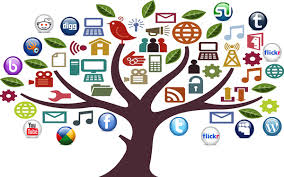
As it is known the term “disruptive innovation” denotes new technology that fundamentally changes the ratio of the market value and ultimately destroys the existing products or services. Today I will speak about disruptive technologies in the printing industry.
Where did it all begin? It turns out that in the middle of the fifteenth century, typography itself proved as a disruptive innovation. Until that time, books were multiplied by hands – scribes, mostly monks of medieval monasteries did it. This craft was extremely common and honorable, moreover monks earned a lot of money. Printed reproduction of books made their work unnecessary. After the appearance of printing machines, the monks started to panic. Some even began to fight against the latest invention.
For five hundred years, the printing technology reign the industry, but now the time has come for a new one. Digital technologies – Internet, social media, e-books – are replacing the printing industry. Almost all communication channels that use paper as a medium to some extent are affected by the digital revolution.
Paper letters gradually fell out of use. According to the polls, almost two-thirds of Americans believe that by 2050 no one will send the usual post letters. Therefore, direct mail advertising is used less and less.
Newspapers and magazines are in an unequal struggle with the electronic media; they are suffering from falling circulation and advertising revenue, and have been forced to close or move online.
Printed books more insistently forced out by e-books. Now the online retail giant Amazon announced that sales of e-books are almost twice as high as the realization of printed books in hardcover.
Why is it happening? New technologies are objectively cheaper and more efficient than older. Digital information is updated instantly and comes to us almost free – the cost of access to the Internet becomes cheaper all the time. We have become inseparable with mobile devices and we are interested in getting information anywhere and at any time. To use new digital innovation is considered to be fashionable and stylish. Compared with digital, print media looks primitive, dull and outdated, and besides, the factor of saving trees is becoming increasingly important.
The industry is trying to fight back. Magazines launch ad campaigns praising the benefits of paper in comparison with electronic media. Book publishers are struggling with booksellers by trying to get them to maintain priority over the electronic paper books, but all these attempts do not change the main trend. Printing is going to die, and it is happening much faster than we can imagine. Finally, it became clear in spring 2010, after the extraordinary success of the iPad. Demand for this device and its popularity have clearly shown that people – and not just the younger generation – are ready to move to new technologies, and in fact, want to go after them as soon as possible.
Reviewed by Alexis Macklin

Keen insights. I wonder what impact 3-D printing will have on all of this?
It is interesting that print machines being died as equipment for producing printed things to read were reborn into another quality – producing thing for multipurpose use. Volume of global consumer goods market, which in principle can be printed – including toys, accessories, jewelry, shoes, simple clothes – in ten years will be according some prognoses about $ 4 trillion per year.
Great job, it’s an interesting perspective on the history and tendencies regarding disruptive innovation in journalism. I’m sure there are a lot of good solutions waiting for us to embrace them, so we can bring stories to our public.
Really interesting topic, I loved the background information. Most people in my generation do not read paper newspapers or magazines or even send hard letters. It is all done online, it is very rare that I see someone my age carrying a newspaper.